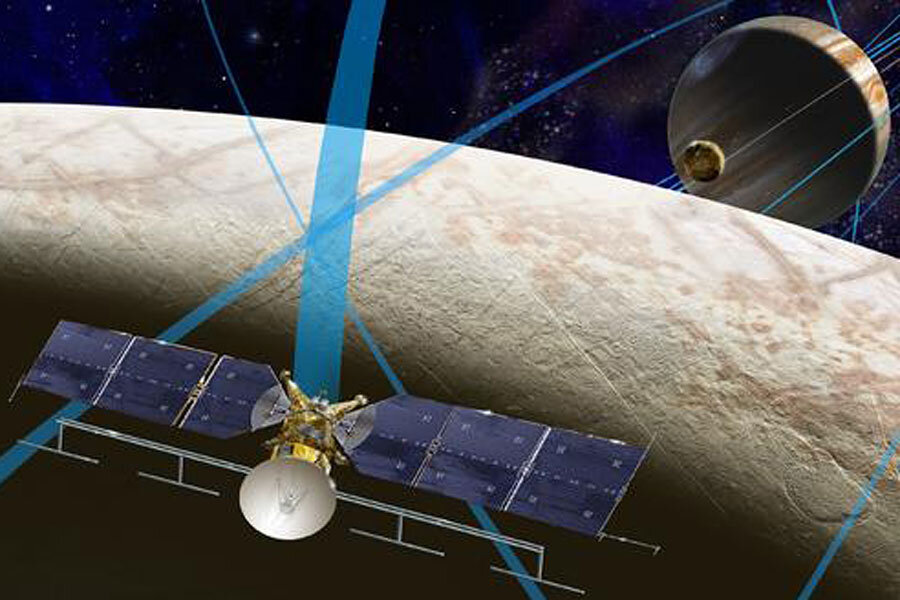In new budget, NASA sets sights on Europa
Loading...
Sen—The preliminary version of NASA's budget would see the long-running Opportunity Mars rover and Lunar Reconnaissance Orbiter cease operations to clear the way for newer robotic missions, including the first probe to one of Jupiter's moons, Europa.
Astonishment has been expressed by many space-watchers on Twitter that the agency could end the work of Opportunity which has been successfully trundling about the Red Planet since January 2004.
However, agency officials emphasized in press statements yesterday that the 2016 budget request is not finalized. Both missions were also slated for closure in the 2015 budget, but money was reallocated to allow the probes to continue their work.
"This budget fully supports all missions selected for development, all missions in prime operations, and all but two extended missions (Lunar Reconnaissance Orbiter and Mars Exploration Rover/Opportunity) ranked highly in the latest senior review," NASA wrote in budgetary documents released yesterday (2 February).
The allocation, however, illustrates the dilemma NASA finds itself in when machines last long past their expected lifetime. The agency is eager to press forward with its Mars 2020 rover as well as an unnamed Europa mission, both missions that will extend Solar System science in the next decade.
However, in an era of limited budgets, it's difficult to find the money when missions continue to be productive long last their expiry date. Opportunity just passed its 11th anniversary on Mars, when it was slated to last only 90 days. LRO is approaching its seventh year of observations, when it was only expected to last one.
Both missions are famous for finding water on their respective bodies. LRO spotted ice in permanently shadowed craters on the moon, while Opportunity found previously water-soaked rocks and hematite "blueberries" close to its landing site in Meridani Planum.
Water is considered one ingredient of habitability in the Solar System, and will likely represent what the Mars 2020 rover and Europa mission will search for as well.
Europa is believed to be an ice-covered moon with a possible ocean underneath. Whether the ocean contains life is up for debate, but in the last couple of years NASA has spoken about its desire to learn more about the Jovian moon, and a mission called Europa Clipper has been on the drawing board.
Mars 2020 is expected to be a close design copy of the Curiosity's rover chassis, but with different instruments on board. Curiosity was designed to search for habitable environments in the past and present, while Mars 2020 has instruments that could narrow down the search for life itself.
NASA's planetary science request for 2016 is $1.361 billion, roughly a six per cent decrease from the $1.438 billion passed for the 2015 budget. That said, the agency projects increases in planetary science beyond 2015 levels starting in 2017.
The agency is requesting an overall budget of $18.5 billion for 2016, a $500 million increase on what was approved for this year.
Related Links:
More on space government and business
NASA moon spacecraft makes icy find as it celebrates orbital anniversary
Original story from Sen. © 2015 Sen TV Limited. All rights reserved. This material may not be published, broadcast, rewritten or redistributed. For more space news visit Sen.com and follow @sen on Twitter.







